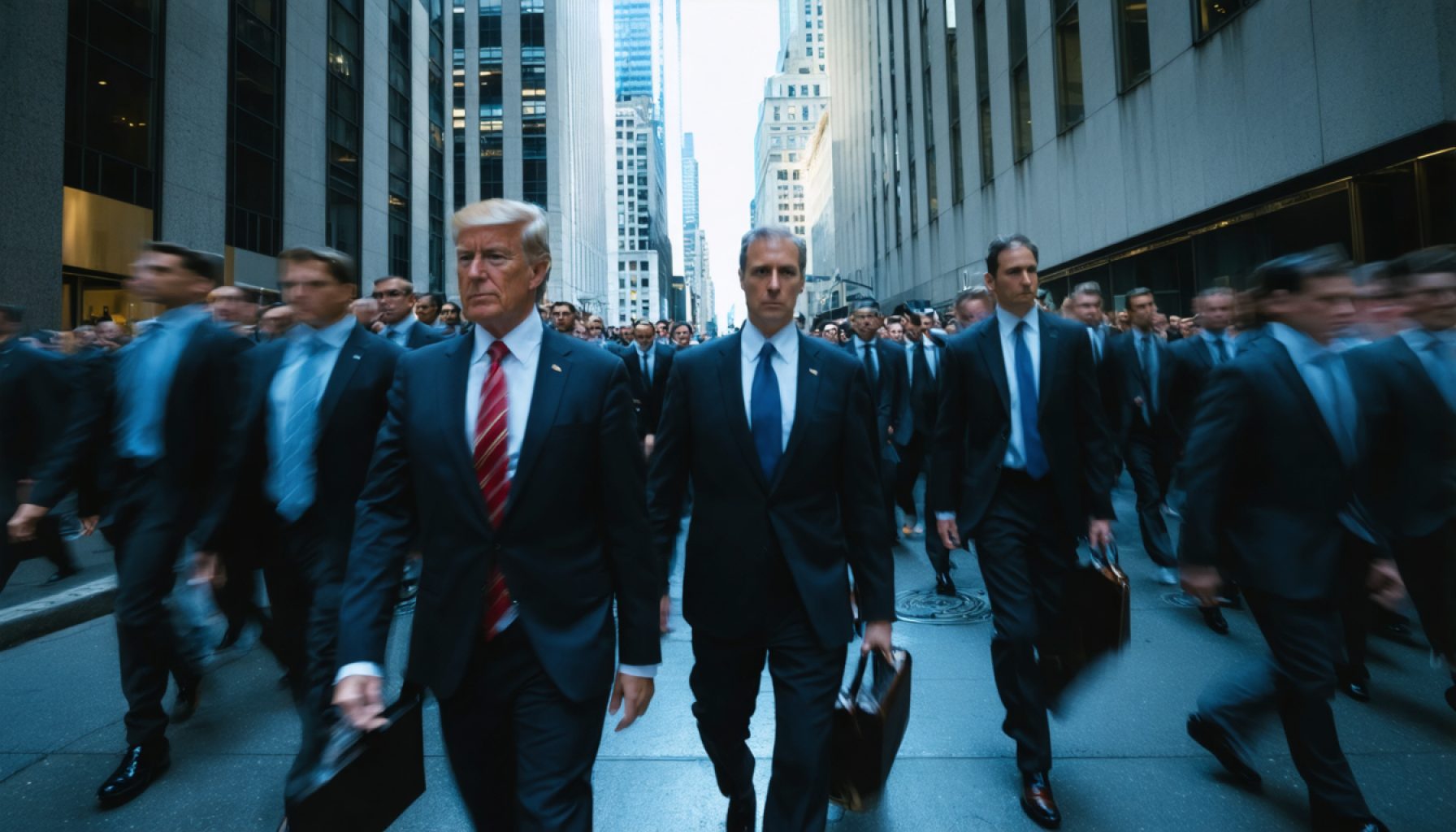- Cutting-edge technologies like AI and machine learning drive stock market decisions, analyzing vast data to identify hidden patterns.
- These technologies democratize market access, empowering retail investors and shifting power from traditional financial elites.
- Current macroeconomic complexities, including inflation and central banks’ policies, significantly impact investor strategies.
- The stock market reflects human behavior, embodying dreams and fears in its dynamic dance of wealth and risk.
- Successful investing requires deep research, understanding of economic indicators, and discernment to navigate market fluctuations.
- The market’s vibrancy is akin to a global tapestry, connecting investors worldwide with the heartbeat of the economy.
An electrifying pulse thrums through the corridors of Wall Street, where numbers dance like flickering neon lights and traders are propelled by both fear and excitement. The stock market, often portrayed in the dull monotone of charts and graphs, has recently morphed into an electrifying landscape of unpredictability and opportunity, unveiling the sophisticated ballet of algorithms and strategies that animate its latest frenzy.
At the heart of this transformation are the cutting-edge technologies redefining the financial terrain. Artificial intelligence and machine learning now drive decisions once dominated by human intuition. These technological tools sift through vast oceans of data with precision, identifying patterns invisible to the human eye. Imagine a chess grandmaster playing hundreds of games simultaneously, each move calculated and recalculated, learning and adapting in real-time.
The proliferation of these technologies has also democratized access to financial markets. Retail investors, armed with smart trading apps and a universe of Reddit forums, have stormed the gates traditionally held by financial elites. It’s like witnessing a digital renaissance, where power disperses away from Wall Street’s granite façades into living rooms across the globe. Some may recall the dramatic surge and fall of GameStop’s stock, emblematic of this newfound force.
Meanwhile, the macroeconomic landscape provides its own set of complexities. Inflation, once a specter, now looms large, reshaping investor strategies. Central banks walk a tightrope, balancing the need for economic stability with the risk of overheating, their every word parsed and scrutinized for clues about future policy. Interest rate changes are whispered rumors one day, market-shaking announcements the next.
Yet beyond the algorithms and economic doctrines lies a simple truth: the stock market is a profound reflection of human behavior. It captures our collective hopes, dreams, and fears — magnified and laid bare. The eternal allure of wealth and risk dances in every trade.
For investors seeking to navigate these tumultuous waters, the key takeaway is timeless. Deep research, a robust understanding of economic indicators, and the wisdom to know when to ride a wave or hold steady are invaluable. In this age of rapid information, discernment becomes both a shield and a key.
As the market thrums with energy, a captivating drama unfolds daily — a pageant of numbers and narratives. Whether peering from the trading floors of New York or from afar, today’s investors are part of a vast, interconnected tapestry, plugging into the beating heart of the global economy.
The Dynamic Pulse of Wall Street: Harnessing AI and Economic Insights
The landscape of Wall Street is no longer confined to the monochrome of traditional charts and graphs; it’s a vibrant, electrifying spectacle shaped by cutting-edge technology and shifting economic paradigms. Let’s delve deeper into the factors transforming the financial arena.
The Power of Technology in Finance
Artificial Intelligence and Machine Learning: These technologies have revolutionized how decisions are made in the stock market. Algorithms process billion-dollar transactions at lightning speed, adapting in real-time to new data. Firms harness AI for sentiment analysis, predicting market trends by analyzing social media chatter and news articles. This advanced prediction can mean gains or losses of millions. IBM, for instance, offers AI solutions that can predict market shifts with remarkable accuracy.
Democratization of Trading: Technologies like smart trading apps and platforms such as Robinhood and eToro provide retail investors access to markets previously dominated by financial elites. This shift mirrors the digital renaissance where information, and thus power, disperses globally. The GameStop saga symbolizes this potent trend. For those intrigued, check broader community discussions on platforms like Reddit’s WallStreetBets.
Navigating the Macroeconomic Landscape
Inflation and Economic Indicators: Investors must remain vigilant about inflation trends, which dramatically influence market strategies. Central banks play a crucial role, with their policy changes—or even hints of them—causing significant market volatility. The Federal Reserve’s announcements, in particular, are closely watched.
Interest Rate Fluctuations: Investors need to monitor central bank signals on rate changes. Diversifying investments and hedging—using tools like options and futures—can safeguard portfolios against sudden shifts.
Real-World Use Cases and Insights
1. Risk Management Strategies: Diversification remains a steadfast strategy. Balancing asset types—stocks, bonds, commodities—can mitigate risks associated with market unpredictability.
2. Leverage Technology: Use AI-powered tools to get an edge in forecasting and investment decision-making. Platforms like Bloomberg Terminal provide extensive analytics tools to interpret market data.
3. Stay Informed: Continuous learning through credible sources—such as The Wall Street Journal and Financial Times—keeps you updated on financial news and trends.
Pros and Cons of Trading Technologies
Pros:
– Enhanced speed and efficiency.
– Greater access to market insights and data.
– Democratization allows broader participation.
Cons:
– Increased volatility due to rapid trade execution.
– Over-reliance on technology can lead to significant losses in the case of malfunctions.
Actionable Recommendations
– Leverage Educational Tools: Utilize online courses from platforms like Coursera and Udemy for better trading insights.
– Embrace Community Engagement: Active participation in discussion forums can provide grassroots insights into market trends.
– Constantly Evaluate Your Portfolio: Regular assessments can ensure alignment with economic shifts and personal risk tolerance levels.
In conclusion, while the heart of Wall Street beats with electrifying intensity, equipped with the right tools, strategies, and knowledge, investors can harness this energy to their advantage. Whether you’re nestled in the bustling financial hubs or investing from afar, the market narrative is yours to write within this vast, interconnected economic tapestry.
